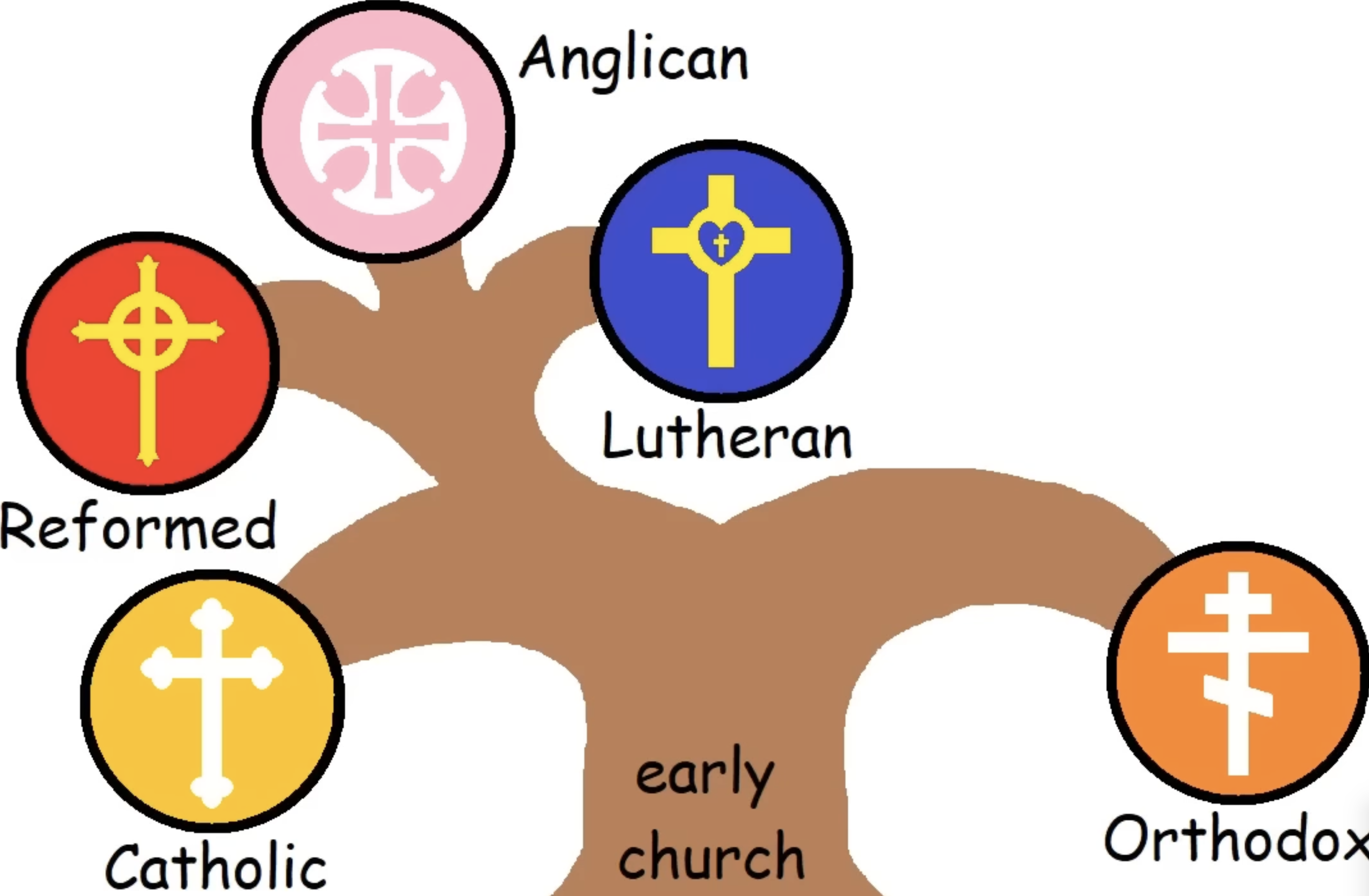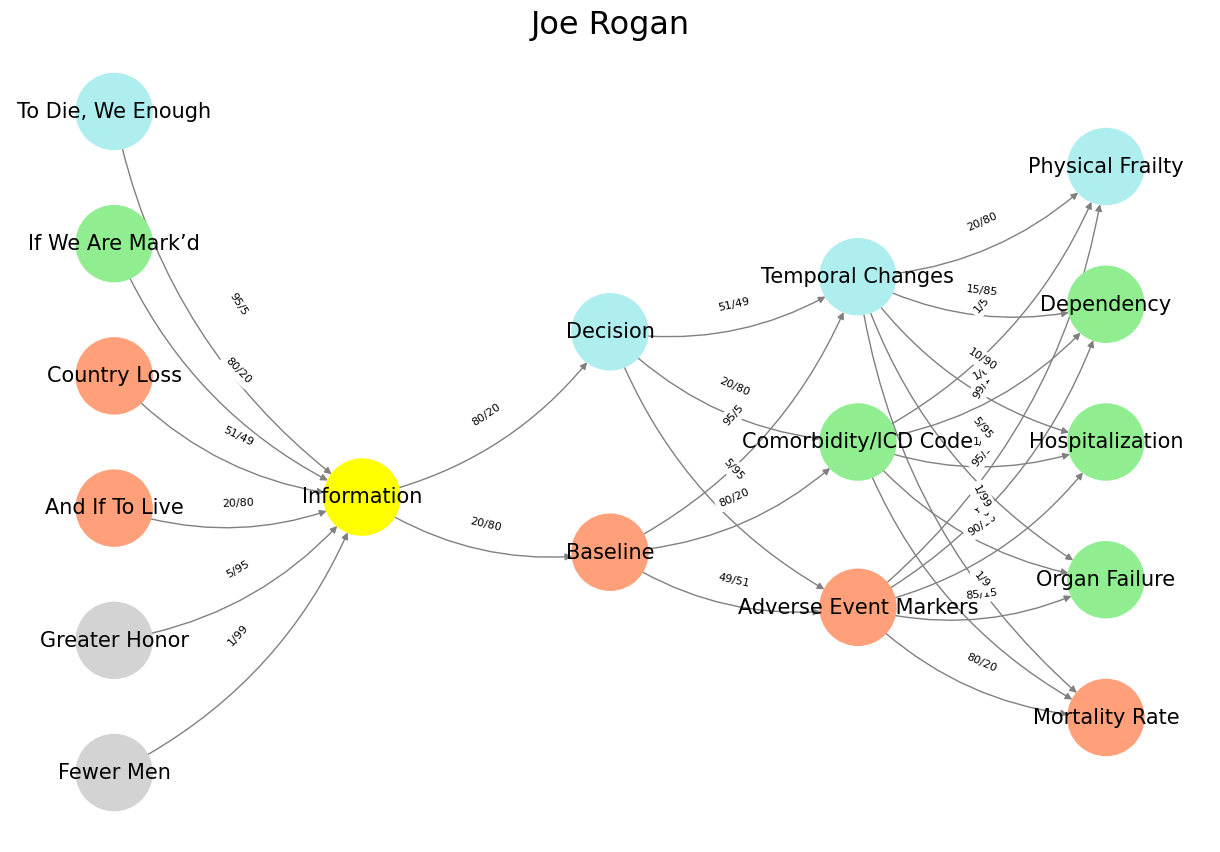Resilience 🗡️❤️💰#
Joe Rogan operates as a neural hub in a dynamic information ecosystem, a network of narratives, emergent sentiments, and shifting ideological currents. He does not present himself as a thought leader in the traditional sense—he does not craft manifestos or dictate political programs. Instead, he functions as an influencer in the neural model, positioned at the Information node, absorbing and disseminating the voices of others. The real ideological force flows through him, not from him. He does not generate the political energy but channels it, directing attention toward indicators—the figures and ideas that reflect emergent cultural and political realities. This positioning makes him elusive, ambiguous to those who attempt to categorize him along a left-right binary. Yet, like any neural network, his structure reveals the nature of the output: he amplifies, shapes, and normalizes the voices of those who pass through his platform.

Fig. 10 Influencer (Information) vs. Indicator (Mark’d). These reflects sentiments in 2 Chronicles 17:9-12: For the eyes of the Lord run to and fro throughout the whole earth, to show Himself strong on behalf of them whose heart is perfect toward Him. And parallels Shakespeare’s image of the poet’s eye “in a fine frenzy rolling,” scanning from heaven to earth and back. Ukubona beyond the mundane (network layers 3-5), upstream to first prinicples of the ecosystem (layer 1). This is the duty of intelligence and what our App and its variants in and beyond clinical medicine aims for – to elevate perception, agency, and games for all. To leave a shrinking marketplace for the serpent in Eden, for snakeoil salesmen, for fraudstars. To shrink the number of the gullible.#
The crucial node in this model—If We Are Mark’d—represents the indicator, the figure whose presence signals the trajectory of sentiment, just as biomarkers signal physiological conditions. Rogan hosts voices that are not necessarily his views but are views he deems significant enough to be heard. These guests range across the spectrum, but the weights of their connections tell a story. The strongest links—those weighted at 80/20 or more—suggest an overwhelming selection bias toward voices skeptical of mainstream liberal narratives. Figures like Jordan Peterson, Eric Weinstein, or Peter Thiel do not just appear on Rogan’s podcast; they serve as structural indicators of a broader shift. Rogan, at Information, is connected to Baseline and Decision—an iterative loop between conventional knowledge and the space where alternatives are weighed. By consistently selecting certain indicators, he helps mark where the balance is tipping. He is not just neutral ground; he is the conduit through which these indicators gain traction.
The function of this model is not one of overt partisanship but rather of an organic self-reinforcement system. If one views Rogan as a media ecosystem rather than a single entity, his role is akin to a feedback loop within a physiological network. A signal—whether skepticism of vaccines, disdain for corporate media, or interest in masculinity—enters the network through an indicator. That signal interacts with baseline assumptions, faces a decision layer (debate, reflection, discourse), and ultimately reweights the system’s perceptions. The most impactful indicators—those that trigger the strongest If We Are Mark’d response—shift the network’s homeostasis. This is how narratives move from the fringe to mainstream plausibility. By the time the information diffuses outward, it has been reprocessed, normalized, and refined.
But Rogan is not just a passive receptor. His position as Information means that he influences not by dictating views, but by structuring the possible space of discourse. His choices set the parameters of engagement, much like the thresholds in a neural network determine which signals propagate forward. The structure of the network reveals a fascinating insight: while To Die, We Enough (95/5) is the most distant node, tied to finality, Country Loss (51/49) sits at the tipping point, where ideological realignment is still contested. This reflects the role Rogan plays—his choices determine whether a controversial topic remains a speculative critique (Country Loss as mere possibility) or hardens into inevitability (To Die, We Enough as final reality). The right-wing ecosystem is thus not defined by whether Rogan himself is “right-wing,” but by the reality that his neural network privileges and normalizes certain ideological shifts over others.
In this model, influence is about directionality, not explicit endorsement. Rogan does not have to claim an ideology. The weights of the network make the decision for him.
Show code cell source
import numpy as np
import matplotlib.pyplot as plt
import networkx as nx
# Define the neural network layers
def define_layers():
return {
'Suis': ['Fewer Men', 'Greater Honor', 'And If To Live', 'Country Loss', "If We Are Mark’d", 'To Die, We Enough'], # Static
'Voir': ['Information'],
'Choisis': ['Baseline', 'Decision'],
'Deviens': ['Adverse Event Markers', 'Comorbidity/ICD Code', 'Temporal Changes'],
"M'èléve": ['Mortality Rate', 'Organ Failure', 'Hospitalization', 'Dependency', 'Physical Frailty']
}
# Assign colors to nodes
def assign_colors():
color_map = {
'yellow': ['Information'],
'paleturquoise': ['To Die, We Enough', 'Decision', 'Temporal Changes', 'Physical Frailty'],
'lightgreen': ["If We Are Mark’d", 'Comorbidity/ICD Code', 'Organ Failure', 'Dependency', 'Hospitalization'],
'lightsalmon': ['And If To Live', 'Country Loss', 'Baseline', 'Adverse Event Markers', 'Mortality Rate'],
}
return {node: color for color, nodes in color_map.items() for node in nodes}
# Define edge weights (hardcoded for editing)
def define_edges():
return {
('Fewer Men', 'Information'): '1/99',
('Greater Honor', 'Information'): '5/95',
('And If To Live', 'Information'): '20/80',
('Country Loss', 'Information'): '51/49',
("If We Are Mark’d", 'Information'): '80/20',
('To Die, We Enough', 'Information'): '95/5',
('Information', 'Baseline'): '20/80',
('Information', 'Decision'): '80/20',
('Baseline', 'Adverse Event Markers'): '49/51',
('Baseline', 'Comorbidity/ICD Code'): '80/20',
('Baseline', 'Temporal Changes'): '95/5',
('Decision', 'Adverse Event Markers'): '5/95',
('Decision', 'Comorbidity/ICD Code'): '20/80',
('Decision', 'Temporal Changes'): '51/49',
('Adverse Event Markers', 'Mortality Rate'): '80/20',
('Adverse Event Markers', 'Organ Failure'): '85/15',
('Adverse Event Markers', 'Hospitalization'): '90/10',
('Adverse Event Markers', 'Dependency'): '95/5',
('Adverse Event Markers', 'Physical Frailty'): '99/1',
('Comorbidity/ICD Code', 'Mortality Rate'): '1/9',
('Comorbidity/ICD Code', 'Organ Failure'): '1/8',
('Comorbidity/ICD Code', 'Hospitalization'): '1/7',
('Comorbidity/ICD Code', 'Dependency'): '1/6',
('Comorbidity/ICD Code', 'Physical Frailty'): '1/5',
('Temporal Changes', 'Mortality Rate'): '1/99',
('Temporal Changes', 'Organ Failure'): '5/95',
('Temporal Changes', 'Hospitalization'): '10/90',
('Temporal Changes', 'Dependency'): '15/85',
('Temporal Changes', 'Physical Frailty'): '20/80'
}
# Calculate positions for nodes
def calculate_positions(layer, x_offset):
y_positions = np.linspace(-len(layer) / 2, len(layer) / 2, len(layer))
return [(x_offset, y) for y in y_positions]
# Create and visualize the neural network graph
def visualize_nn():
layers = define_layers()
colors = assign_colors()
edges = define_edges()
G = nx.DiGraph()
pos = {}
node_colors = []
# Add nodes and assign positions
for i, (layer_name, nodes) in enumerate(layers.items()):
positions = calculate_positions(nodes, x_offset=i * 2)
for node, position in zip(nodes, positions):
G.add_node(node, layer=layer_name)
pos[node] = position
node_colors.append(colors.get(node, 'lightgray'))
# Add edges with weights
for (source, target), weight in edges.items():
if source in G.nodes and target in G.nodes:
G.add_edge(source, target, weight=weight)
# Draw the graph
plt.figure(figsize=(12, 8))
edges_labels = {(u, v): d["weight"] for u, v, d in G.edges(data=True)}
nx.draw(
G, pos, with_labels=True, node_color=node_colors, edge_color='gray',
node_size=3000, font_size=15, connectionstyle="arc3,rad=0.2"
)
nx.draw_networkx_edge_labels(G, pos, edge_labels=edges_labels, font_size=8)
plt.title("Joe Rogan", fontsize=23)
plt.show()
# Run the visualization
visualize_nn()


Fig. 11 Resources, Needs, Costs, Means, Ends. This is an updated version of the script with annotations tying the neural network layers, colors, and nodes to specific moments in Vita è Bella, enhancing the connection to the film’s narrative and themes:#

